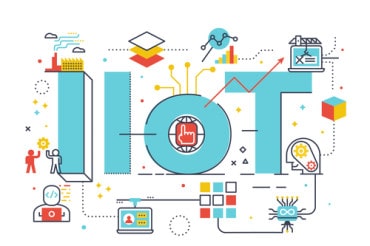
A 5G network offers several advantages for smart manufacturing and remote medicine.
You might still be getting used to the speed of the 4G network your smartphone uses, but get ready for 5G to be a fixture in the marketplace by 2019 or 2020. Some major telecommunications companies have already started rolling it out in test markets.
Though the telecommunications sector might be the first thing you think of in terms of a 5G network, this new technology is also showing promise in manufacturing. Let’s look at some potential ways 5G could forever change things within the manufacturing realm.
5G could help with manufacturing and supply chain
Analysts are excited about what’s known as “smart manufacturing,” and how it’ll likely cause major improvements in factories and other large-scale facilities. Smart manufacturing is all about making data available in the manufacturing process so it can be analyzedand acted on.
For example, machine operators might get insight about which pieces of equipment aren’t at full capacity, then make choices to minimize downtime and boost efficiency. Smart manufacturing also makes it easier to trace products and individual components to minimize damage during recall situations.
It’s also possible for people using smart manufacturing technologies to learn details about the amounts of raw materials used within certain facilities to reduce scrap costs. As you can imagine, this kind of analysis wouldn’t work without a network, and 5G seems like a good fit.
Related: Use cases in supply-chain analytics
5G and the IoT: New possibilities for industries?
The Industrial Internet of Things (IIoT) is a hot topic. Thanks to many increasingly intelligent devices people use every day, such as gadgets within their “smart homes,” individuals have a growing familiarity with the Internet of Things (IoT), and have probably at least heard about how this technology applies to the industrial sector.
Researchers familiar with the IoT and possible applications related to 5G argue a 5G connection does much more than just enable faster data delivery. It could also facilitate interacting with devices that are thousands of miles away. In addition, a 5G connection could be compatible with a gadget that offers mobile coverage in remote or deeply underground areas and boasts more than 10 years of battery life.
There is a high level of interest about how 5G networks could work well with IIoT applications, particularly because a 5G network is characterized by virtually no latency. Ideally, the amount of time it takes a data packet to get from one point to another within a computer network will one day be less than a millisecond.
Representatives at the University of Sydney are hard at work building a 5G network to purposefully handle applications within the IIoT. Among other things, researchers will focus on how to eliminate data loss when machines communicate with each other in industrial settings. If things go well, the new knowledge could make it so pieces of industrial equipment “talk” to each other seamlessly across countries and even continents.
Smart bandages: 5G seen working well for 3D printing in healthcare
For generations, people in the manufacturing sector have struggled with ways to produce things quickly while keeping costs down. In recent years, 3D printing has emerged as a very real solution to those challenges.
You may have read news stories about 3D printers producing things ranging from wheelchair ramps to car parts, usually at great speed and substantially lower costs than traditional methods. Scientists think the 3D printing phenomenon will get even more momentum thanks to 5G networks.
Welsh researchers are developing a “smart bandage” that’s compatible with the 5G network and allows doctors to assist patients faster and more appropriately because it sends updated data about wound conditions and the healing process.
Related: Designing smart IoT products in healthcare
How does 3D printing fit in? The team responsible for engineering the bandages wants to test them in Southwestern Wales, which has a population of about a million people. If you think about how often you probably use conventional bandages in your home, it’s not hard to imagine the scientists will have plenty of opportunities to assess the performance of high-tech bandages within that sample size.
Assuming 3D printing works well during the test phases, the transition to making the bandages on a much larger scale won’t be hard to carry out. Individuals are hopeful these health-care supplies could have a huge effect on how doctors treat patients, and even on how patients treat themselves.
The bandages could theoretically provide data related to lifestyle changes, plus how well urgent treatment interventions might work. This is one example of how 5G has a good chance of reshaping the manufacturing industry by complementing another industry — smart medicine.
Clearly, 5G technologies could be applied to manufacturing processes for potentially groundbreaking results. For now, though, the best we can do is watch and wait as things progress.





























